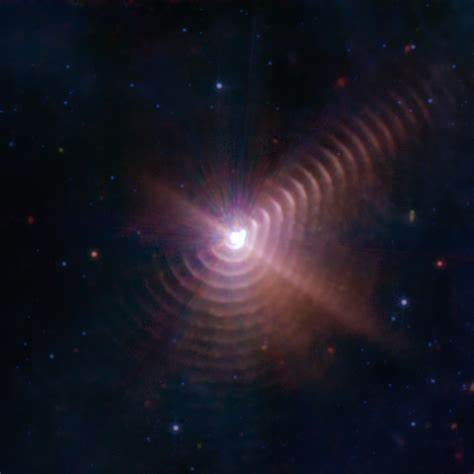Researchers trapped photons inside magnets. And that could be the key to next-generation protective fields.
Researchers trapped photons inside magnetic crystals. But anyway, the magnetic field, or magnetic photonic interaction keeps those photons between crystal structures. So it's possible that magnetic fields. Or plasma-magnetic hybrid fields could trap photons in the same way in those fields.
Fast-rotating magnetic fields can trap photons or light inside them. That thing can make many futuristic things possible. In that case, the magnetic dome where photons are whirling can protect photonic computers against outside radiation.
Researchers trapped photons inside magnets. But we can say that if magnetic fields spin fast enough they can trap photons. The magnetic field looks like a whisk. There are so-called powerlines. And if those powerlines spin fast enough they can trap photons inside that structure. Another way is to put plasma or ionized atoms, or subatomic particles like protons and electrons between those power lines. The radiation emission will make those particles shine. And that annealing effect forms light waves between those power lines that deny photons travel out from that magnetic structure.
"Scientists have discovered that trapping light within certain magnetic materials can significantly enhance their intrinsic properties. Their study examined a specific layered magnet capable of hosting powerful excitons, enabling it to trap light independently. The optical reactions of this material to magnetic occurrences are remarkably stronger than those in regular magnets". (ScitechDaily.com/Scientists Trap Light Inside a Magnet – Paves Way for Tech Innovations)
But those photon-trapping magnetic fields can also use to create things, like protective fields. That can protect people and vehicles against any weapon, including laser beams. If high-energy photons are trapped between two opposite rotating magnetic fields, it's possible to use them like a laser dome that surrounds objects. The stimulation of radiation emission should also work on those photons.
Sometimes it is suggested that the ball-shaped UFOs that are suddenly disappearing are some kind of aviation system that uses some kind of power field. The light that is trapped in a magnetic field can be used to create a protective field around objects. And those magnetic fields can be used to create energy impulses, like Wolf-Rayet stars are doing.
2) "Light trapped inside a magnetic crystal can strongly enhance its magneto-optical interactions. Credit: Rezlind Bushati" (ScitechDaily.com/Scientists Trap Light Inside a Magnet – Paves Way for Tech Innovations)
3) The Wolf-Rayet star sends plasma impulses.
4) Silver-ball artwork, could the magnetic field that captured photons do this kind of thing around some regular-looking aircraft?
Those pressure or plasma impulses can make the craft levitate silently. That ball-shaped electromagnetic field that traps photons inside can hide some regular-looking aircraft. The plasma balls are fascinating and futuristic VTOL systems. In those systems, high-energy photons along with EM fields will ionize gases.
And if something tries to travel through that field, photons or magnetic fields can stop its journey. If we think of things like portable protective fields that can be carried on a belt, there is a possibility that the photon trapping system can make that thing possible. The thing is that photon traps are the next-generation systems that can make it possible to create many new tools. The ability to trap light in a magnetic field is game-changing technology. Those photons can harvest energy from the sun. And they can connect it to antennas inside that field.
https://scitechdaily.com/scientists-trap-light-inside-a-magnet-paves-way-for-tech-innovations/?expand_article=1
https://technologyandfuture4.wordpress.com/2023/08/20/researchers-trapped-photons-inside-magnets-and-that-could-be-the-key-to-next-generation-protective-fields/








No comments:
Post a Comment
Note: Only a member of this blog may post a comment.